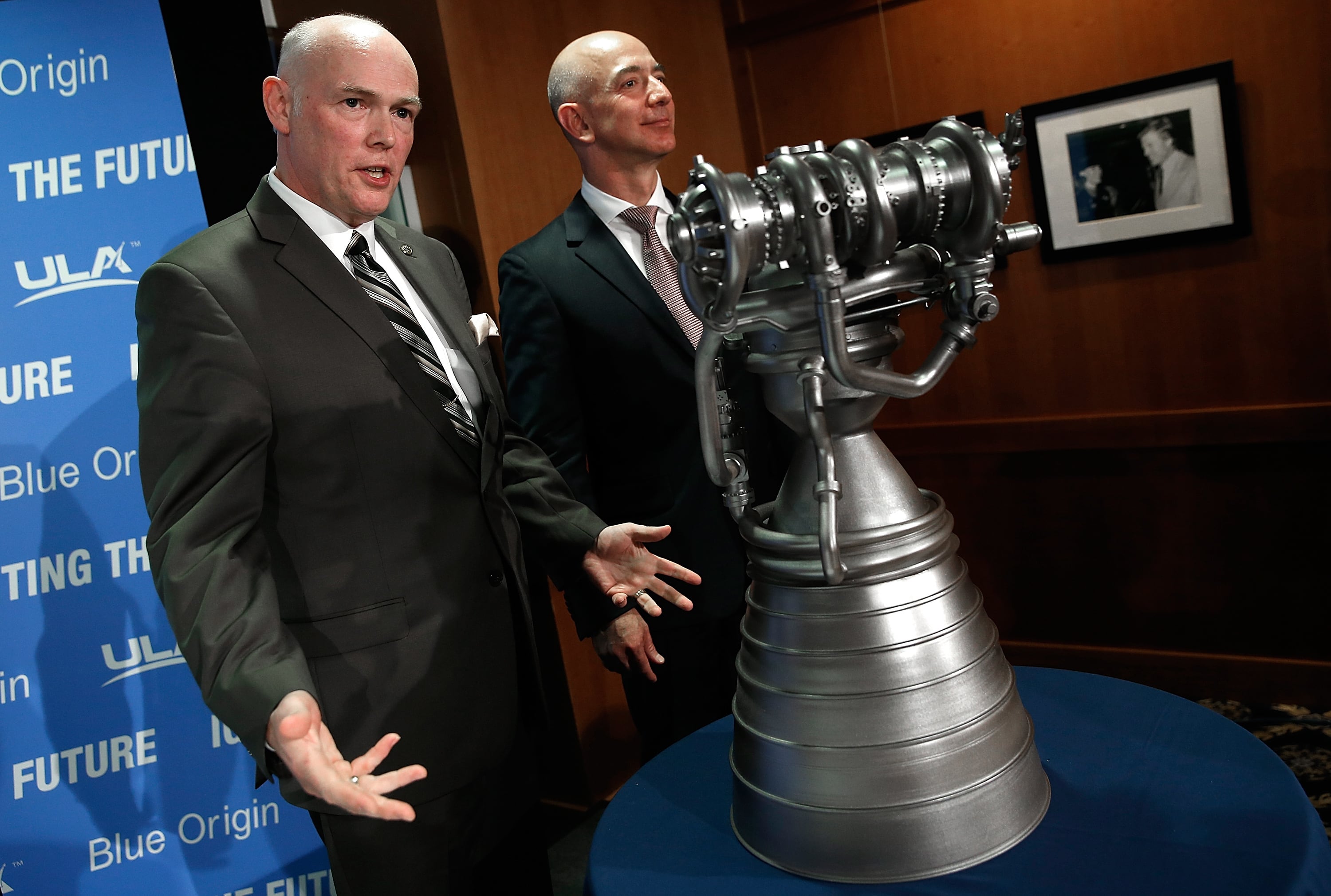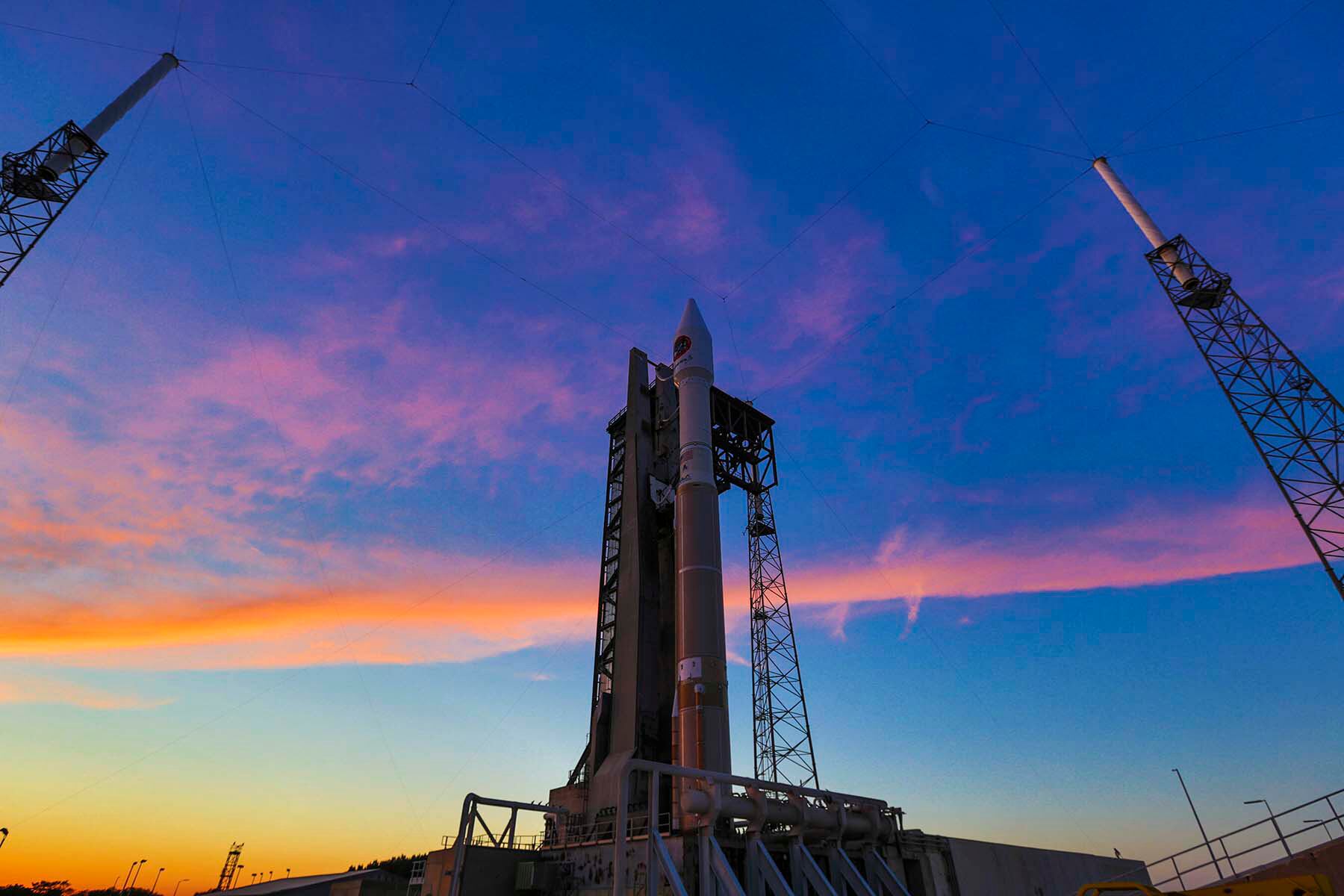WASHINGTON — Blue Origin on Thursday completed the first hot-fire test of its BE-4 engine, a huge milestone that could pave the way for its use aboard United Launch Alliance’s new Vulcan rocket.
Earlier this year, ULA head Tory Bruno told Defense News that the company — a joint venture of Boeing and Lockheed Martin — would be able to downselect between the BE-4 and Aerojet Rocketdyne’s AR1 engine once hot-fire tests of the Blue Origin engine were complete. However, the company has not reached a decision yet, said a ULA spokeswoman.
“While we are looking to make a downselect to one engine provider, it is an ongoing procurement and downselection, and we are not commenting at this time,” she told Defense News on Friday.
Blue Origin on Thursday tweeted out video of its first-ever hot-fire test of the BE-4 engine, which the company is developing to propel its own New Glenn rocket and potentially ULA’s Vulcan. Blue had suffered a minor setback to testing in May, when it “lost a set of powerpack test hardware” on a BE-4 test stand.
In a statement, ULA congratulated Blue Origin on the successful hot-fire test, calling it “a tremendous accomplishment in the development of a new engine.”
The BE-4 is the largest rocket motor of its size to use methane as a propellant, which introduces the possibility of combustion instability, Bruno explained to Defense News in April.
ULA has leaned toward choosing the BE-4 for Vulcan due to its lower-than-expected cost and rapid development. But Aerojet has a longer history in engine manufacturing, and its AR1 is considered to be lower risk in part because it is fueled by kerosene and liquid oxygen, similar to the engine that powers ULA’s Atlas V rocket.
RELATED

Although Bruno had said ULA would downselect to a final vendor ahead of submitting its bid for Evolved Expendable Launch Vehicle launch service agreements, the company could actually choose to submit two proposals for Vulcan — one with the BE-4 and one with the AR1.
The EELV request for proposals released earlier this month by the Air Force “states that offerors may submit no more than two proposals per company,” said Capt. Emily Grabowski, a spokeswoman for the service. However, “the government will award a maximum of one agreement for one EELV launch system prototype per company,” meaning that ULA will not be able to get government funding to integrate both engines with Vulcan.
RELATED

The goal of the EELV program is to spur industry to develop new rockets — propelled by domestically manufactured engines — to launch national security payloads into space. Right now, ULA’s most widely used launch vehicle, the Atlas V, is powered by Russian-made RD-180 engines.
The service plans to award up to three private-public partnerships that will help companies develop prototype systems ahead of a final downselect to two vendors in 2020 for 2022 launches. ULA, SpaceX and Orbital ATK are expected to participate.
Valerie Insinna is Defense News' air warfare reporter. She previously worked the Navy/congressional beats for Defense Daily, which followed almost three years as a staff writer for National Defense Magazine. Prior to that, she worked as an editorial assistant for the Tokyo Shimbun’s Washington bureau.








